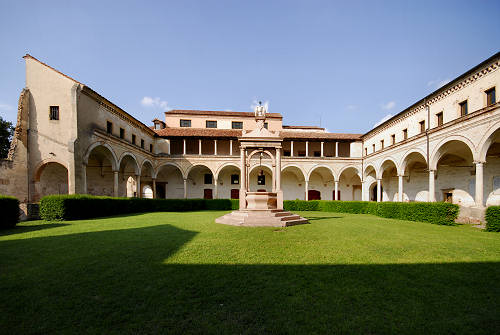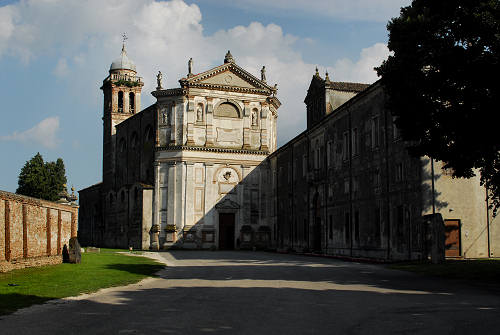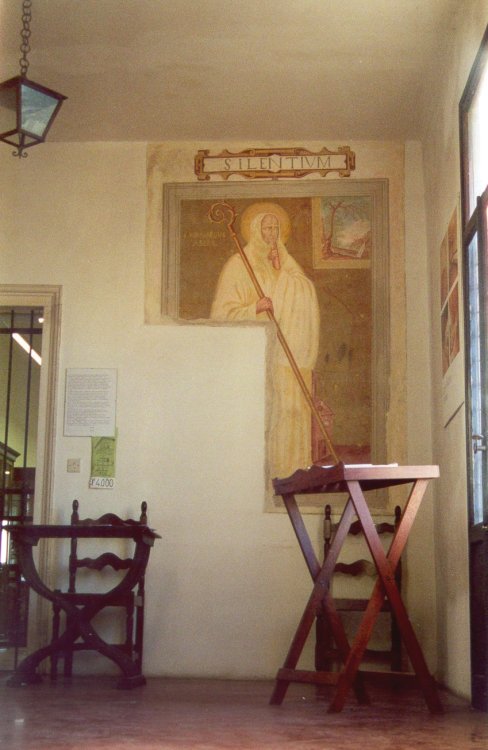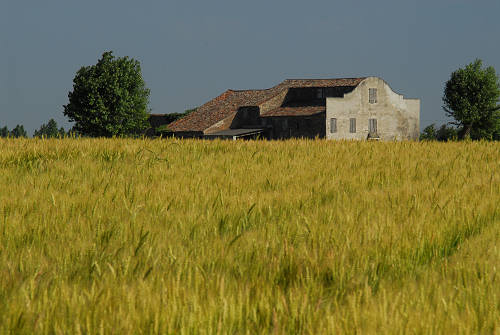|

As early as the 12th century the Abbazia di S. Maria di Carceri (Abbey of St. Mary of Carceri) was known as a hospice that welcomed the pilgrims who headed to Rome from northern Europe, following the road the takes from Padua to Bologna. In 1399 the monks enlarged the Church further: the structure had nave and two aisles in the Romanesque style. In 1407 the Augustinians left Carceri because their number had been drastically cut down by famines, plagues and locust invasions, these events being rather frequent in those times. To infuse new life in the Abbey, Pope Gregory XII moved ownership and care of the Church and of the monastery from the Augustinian monks to the Camaldolese monks, who remained there for nearly three centuries. Under the Camaldolese rule, the abbey lived a period of extraordinary splendour.
 The monks reclaimed the surrounding land, increased the structures that composed the Abbey by adding four cloisters, built a wide library room, and a lodge for pilgrims; they enlarged the Church with the choir, and to replace the nave and the two aisles that had been burnt in a fire (1643) they built the Barocco-style single nave that has survived to present day, and which was consecrated by St. Gregory Barbarigo in 1686. The Camaldolese monks set up a true Study Academy in the abbey, in partnership with the University of Padua; they had a Novitiate and a school that prepared young people to monastic life. The monks reclaimed the surrounding land, increased the structures that composed the Abbey by adding four cloisters, built a wide library room, and a lodge for pilgrims; they enlarged the Church with the choir, and to replace the nave and the two aisles that had been burnt in a fire (1643) they built the Barocco-style single nave that has survived to present day, and which was consecrated by St. Gregory Barbarigo in 1686. The Camaldolese monks set up a true Study Academy in the abbey, in partnership with the University of Padua; they had a Novitiate and a school that prepared young people to monastic life.
 Moreover they worked ceramics which they then cooked in the furnace; they managed a cattle-shed with hundreds of animals, and run a pharmacy that is now considered the oldest in the Veneto, and which bears witness of their knowledge of botany and officinal herbs. From the 14th to the 16th century the Abbey of Carceri was one of the wealthiest in the Veneto region. Moreover they worked ceramics which they then cooked in the furnace; they managed a cattle-shed with hundreds of animals, and run a pharmacy that is now considered the oldest in the Veneto, and which bears witness of their knowledge of botany and officinal herbs. From the 14th to the 16th century the Abbey of Carceri was one of the wealthiest in the Veneto region.
Towards the middle of the Seventeenth century, the Abbey was inhabited by over 60 Camaldolese monks and a large number of brothers devoted to monastic life, though not being priests. The abbey received bequests, prebends, tithes, and concessions, and over 3,600 reclaimed and cultivated fields in the county of Padua.

Of this golden age there remain the large cloister built in the 1500s, the Church nave with the choir, the upper part of the small entrance porch, the lodge, the library room that once preserved several manuscripts and printed books, and many of which were taken away by the monks themselves in 86 crates at the time of the dissolution of the abbey, or were sold or lost. In 1690 Pope Alexander VIII abolished the Abbey of Carceri, and its lands were auctioned to raise funds for the Republic of Venice in its war against the Turks.
Download depliant:
|